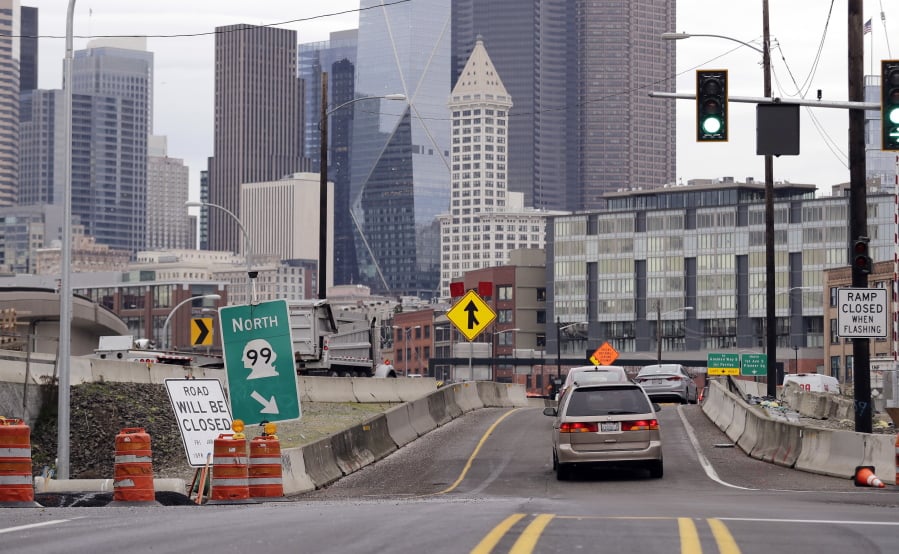SEATTLE — Take those viaduct selfies while you can. The aging elevated freeway is scheduled to close forever Jan. 11 to get ready for the wrecking ball.
Many longtime Seattle residents are getting all teary-eyed and nostalgic about this moment. Sad emojis are flying on social media posts, never mind that a modern replacement tunnel is about to open. Isn’t anyone excited about the tunnel?
I get it. If you have not known the Seattle waterfront without the Alaskan Way Viaduct, which opened in 1953, a lifetime of memories may be associated with this 2-mile-long piece of Highway 99: your first ride on it as a teen after you got your driver’s license, or memorable trips with relatives, or an epic commute? Those who found themselves on it when it was damaged during the 6.8 quake in 2001 surely must have a story to tell. Others who see it every day from their downtown apartments or office windows may have also grown used to it.
My relationship with the doomed freeway is a bit different, and not just because I’ve only lived here for 12 years. I rarely drove on it. My favorite memories include running on it during the Rock ‘n’ Roll Marathon last June, and sketching it time after time since its first sections began coming down in 2011. I’ve appreciated the many interesting viewpoints it offered, the sharp angles, gritty textures and light and dark contrasts.




